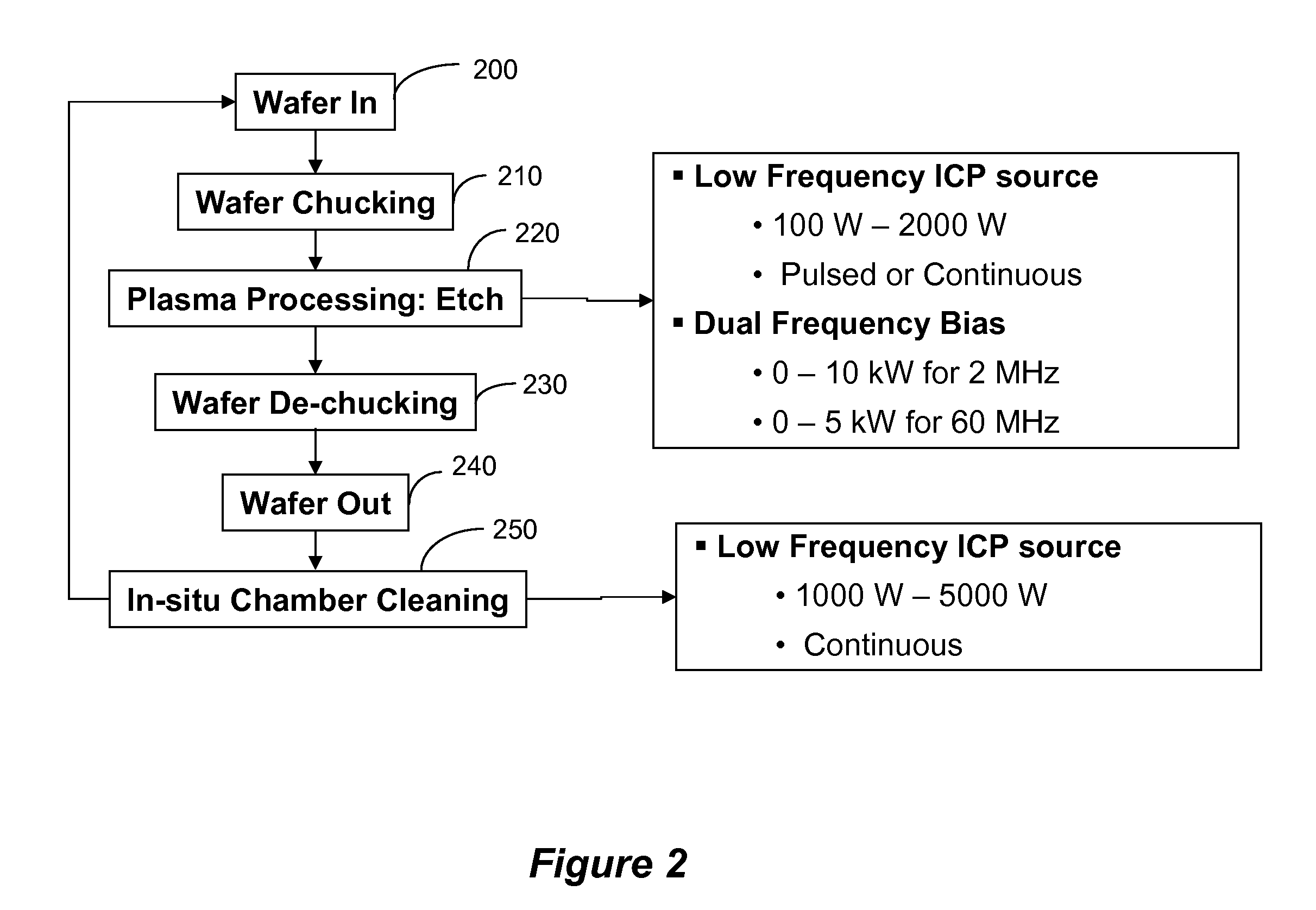Hybrid etch chamber with decoupled plasma controls
- Summary
- Abstract
- Description
- Claims
- Application Information
AI Technical Summary
Benefits of technology
Problems solved by technology
Method used
Image
Examples
Embodiment Construction
[0033]The subject invention provides an etch chamber that enables advance etch processes by enabling independent control of gas dissociation, plasma density, and ion energy. The current inventors have discovered that an improved control of plasma processing parameters can be obtained by combining an inductive-coupling antenna driven at one frequency with dual frequency bias RF power. Moreover, the subject inventors have discovered that the improved control is further enhanced by having the power to the antenna modulated.
[0034]Equation 1 estimates the relationship of the etch rate to the various elements of the plasma.
Eq.1:ERgross=k0Γexp(-EakT)+Yp(1-Θ)Γ++YIEΘΓ+
Wherein—k0 and Ea are rate parameters for spontaneous chemical etching; Γ is the neutrals flux; Yp is the physical sputtering yield; Φ is the fraction of surface sites occupied by the reactant species; Γ+ is the Ion flux; and YIE is the ion enhanced etching yield while the surface is saturated with reactant species. The first t...
PUM
| Property | Measurement | Unit |
|---|---|---|
| Frequency | aaaaa | aaaaa |
| Frequency | aaaaa | aaaaa |
| Frequency | aaaaa | aaaaa |
Abstract
Description
Claims
Application Information
 Login to View More
Login to View More - R&D
- Intellectual Property
- Life Sciences
- Materials
- Tech Scout
- Unparalleled Data Quality
- Higher Quality Content
- 60% Fewer Hallucinations
Browse by: Latest US Patents, China's latest patents, Technical Efficacy Thesaurus, Application Domain, Technology Topic, Popular Technical Reports.
© 2025 PatSnap. All rights reserved.Legal|Privacy policy|Modern Slavery Act Transparency Statement|Sitemap|About US| Contact US: help@patsnap.com



